This is National Invasive Species Invasive Awareness Week, a good opportunity for Floridians to familiarize themselves with several widespread invasive plants commonly found in our residential landscapes. The term “invasive” refers to a non-native species that has escaped into and is multiplying in natural areas, displacing native species and altering ecological processes. Invasive plants can also have negative impacts on agricultural production and recreational areas. Our yards and commercial landscapes are reservoirs from which invasive plants spread to the wild via wind, water or wildlife.
The following plants are listed as invasive by the Florida Exotic Pest Plant Council and the UF/IFAS Assessment of Non-Native Plants in Florida’s Natural Areas. How many of these invaders are growing in your neighborhood?
Albizia julibrissin – mimosa, pink silk tree, Persian silk tree, Chinese silk tree
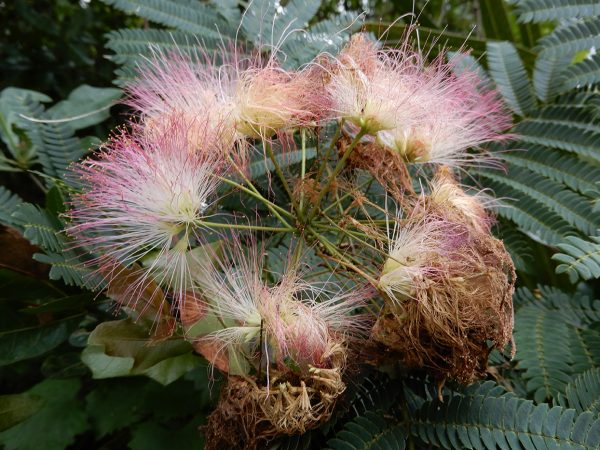
UF herbarium photo by Marc S. Frank
Mimosa is so widespread in Florida and the Southeastern U.S. that many folks mistakenly assume it is native. In fact, this species was introduced from Asia in the 18th century and is now found naturalized – that is, escaped and growing in the wild – in nearly every Florida county. Mimosa typically grows into a vase-shaped tree with a broad spreading canopy and blooms in early summer. It is readily recognized by its fernlike compound leaves, pink and white powderpuff heads of flowers and flat seedpods that become brown and papery at maturity.
Learn more about this plant.
Sphagneticola trilobata – wedelia, creeping oxeye, trailing daisy, goldcup
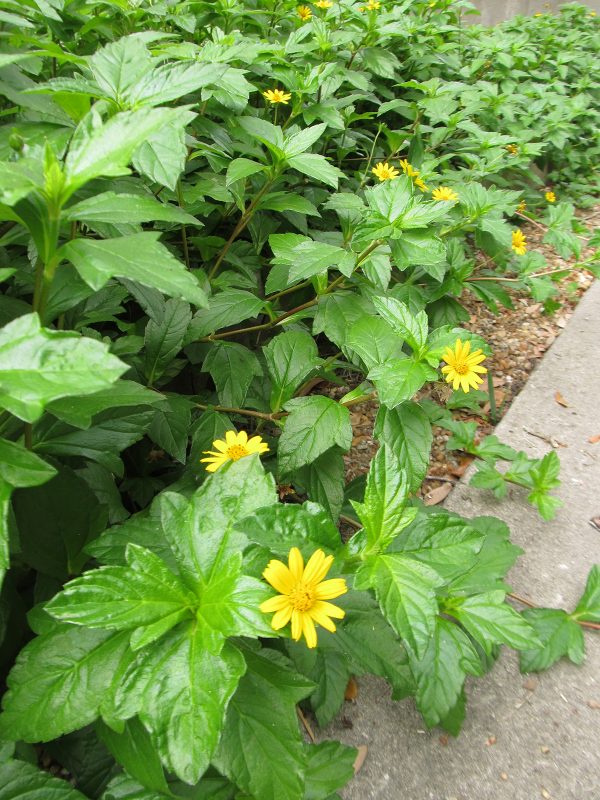
UF herbarium photo of specimen FLAS 243143 by Ronald S. Lange
Originating in Southern Mexico, Central America and South America, wedelia is found naturalized in warm regions worldwide. This aggressive perennial ground cover forms roots on stems that trail along the ground surface. The leaves are rough to the touch and usually three-lobed, with two smaller pointed lateral lobes and a larger, broader terminal lobe. The 1-inch wide, daisylike flower heads – which are actually clusters of many smaller flowers – are produced almost year-round.
Learn more about this plant.
Nephrolepis cordifolia – tuberous sword fern, erect sword fern, tuberous ladder fern
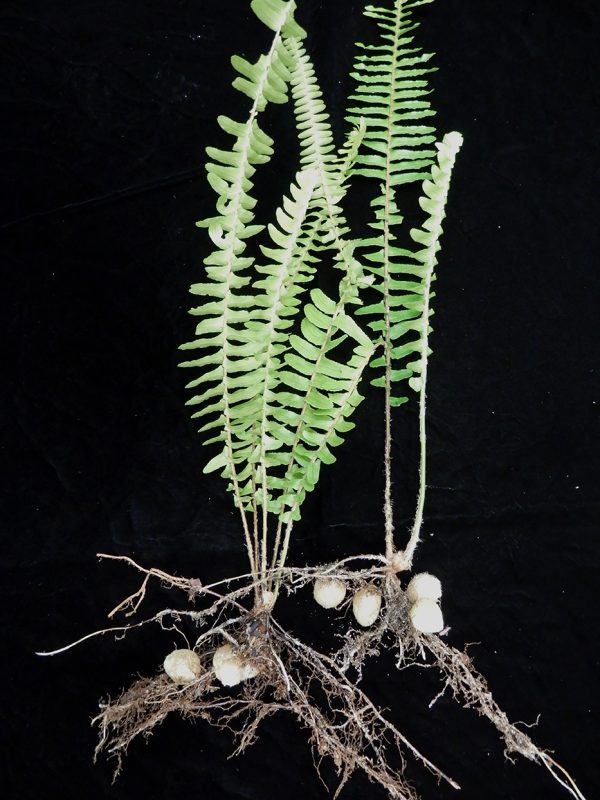
UF herbarium photo by Marc S. Frank
This relative of the Boston fern is thought to be native to the Old World tropics. In Florida, it is commonly cultivated as a ground cover and has escaped to natural areas throughout the state. As the common names suggest, it has erect, pinnate or featherlike fronds 1-2 feet tall and underground runners that develop round, scaly tubers one-half to three-quarters of an inch wide. These tubers are most noticeable during the rainy season but often shrivel and disappear when conditions are dry. Over time, it spreads to form large colonies.
Learn more about this plant.
Senna pendula var. glabrata – Christmas cassia, Christmas senna, valamuerto
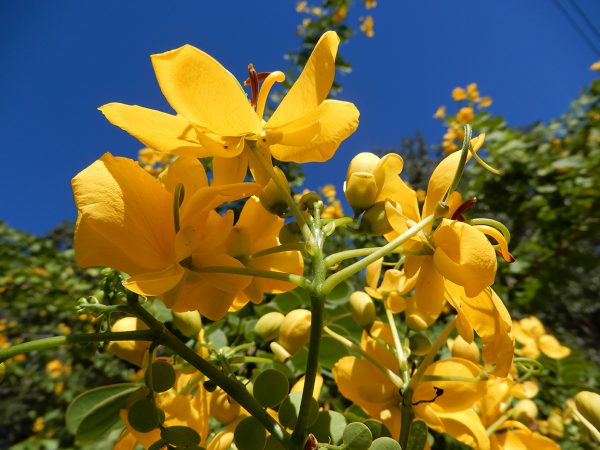
UF herbarium photo by Marc S. Frank
Christmas cassia is a shrub or small tree with arching branches that bears a profusion of bright golden flowers during winter or early spring, followed by dangling pods that look like leathery green beans. It was introduced to Florida from South America under the name Cassia bicapsularis, now known as Senna bicapsularis, and that incorrect name is still often misapplied to our Florida plants. True Senna bicapsularis is uncommon in cultivation and has compound leaves consisting of three pairs of leaflets and flowers borne on very short – less than a quarter inch – stalks, while Senna pendula has compound leaves with four to seven pairs of leaflets and flowers on stalks up to 1 ¼ inches long.
Learn more about this plant.
Lonicera japonica – Japanese honeysuckle, silver and gold honeysuckle
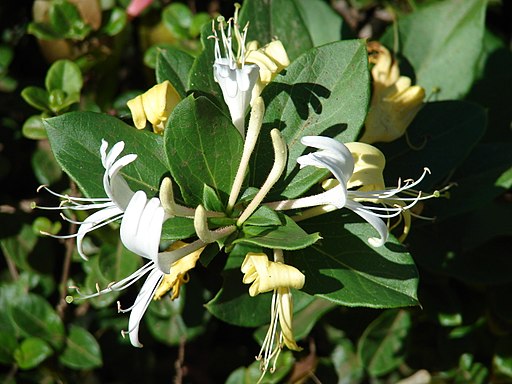
Public domain image by Forest and Kim Starr, CC BY 3.0
Native to China, Japan and Korea, this is one of the most familiar types of honeysuckle, cultivated and escaped into the wild in much of the southern and eastern U.S. Japanese honeysuckle is a fast-growing, twining, evergreen vine with young stems and leaves that are often softly hairy. The tubular, two-lipped flowers are white, aging to yellow, with a delicious, sweet fragrance. Birds feed on the black berries and disperse the seed. Japanese honeysuckle is commonly found naturalized in the northern half of Florida but occasionally pops up on the southern peninsula.
Learn more about this plant.
More information about common Florida invaders is available from the UF/IFAS Center for Aquatic and Invasive Plants.
Marc Frank is an Extension botanist and a biological scientist in the University of Florida Herbarium.